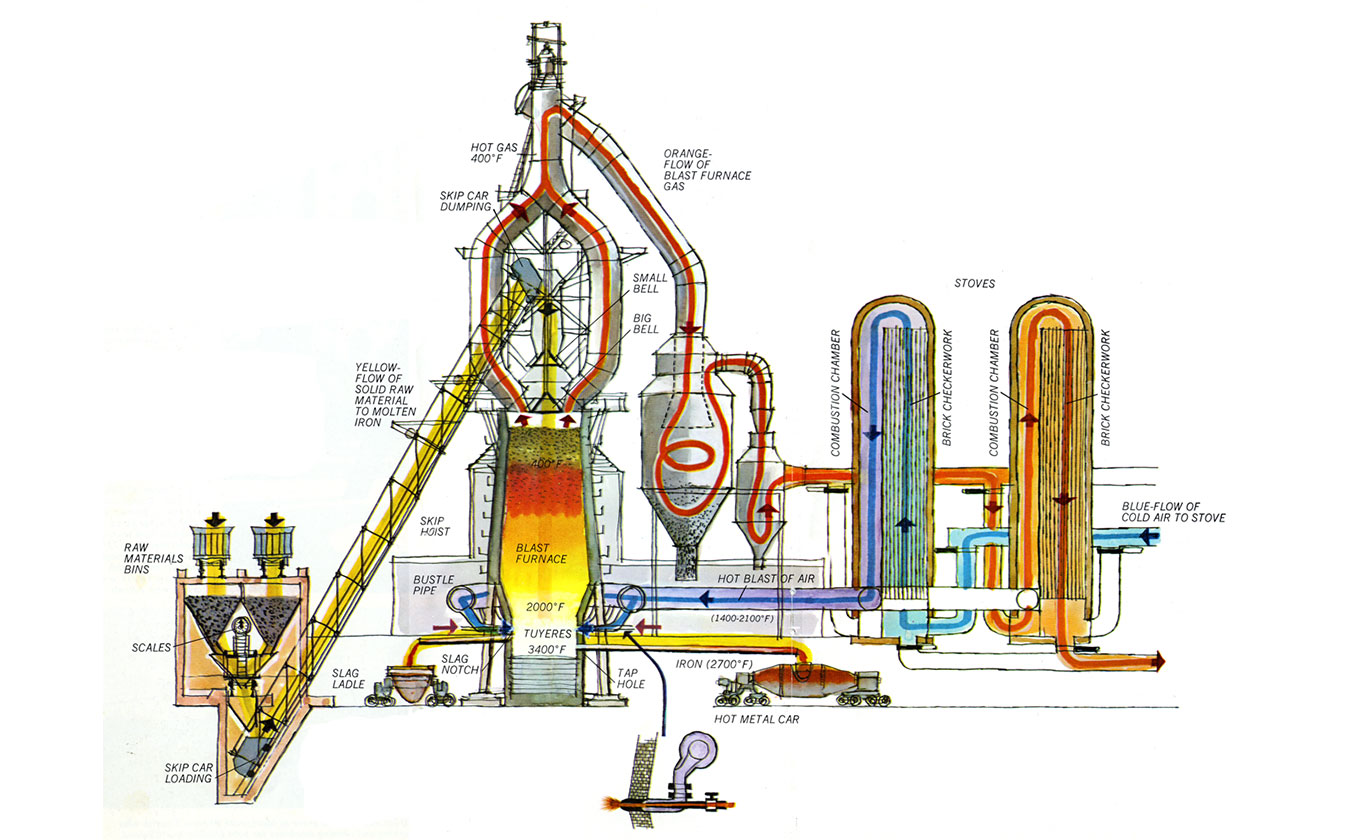
A blast furnace is a steel cylinder lined with refractory. It operates continuously until the lining wears out, which takes many years to occur. The term blast furnace comes from the blast of hot air that is blown into the lower part of the furnace at between 1400º to 2100ºF.
Molten iron is produced in a blast furnace by the following steps:
1. Charge (solid iron ore, coke, and limestone) is constantly dumped into the top of the furnace.
2. A blast of hot air is blown into the furnace from the bottom.
3. Coke is the fuel that supplies additional heat, increasing the temperature of the charge.
4. Chemical reactions occur: coke reacts with oxygen from the air, creating the reducing agent (carbon monoxide), which removes oxygen from the ore.
5. Limestone reacts with impurities in the furnace, forming slag, which floats to the top of the furnace vessel.
6. Every hour or so the molten iron is removed and sent on for further processing.
